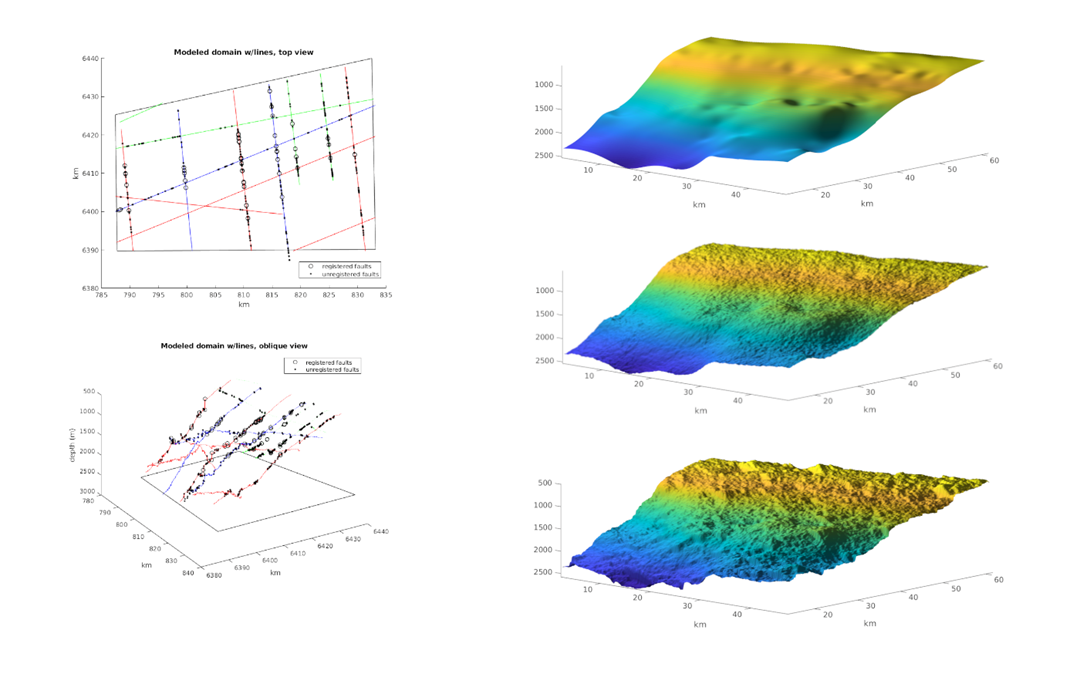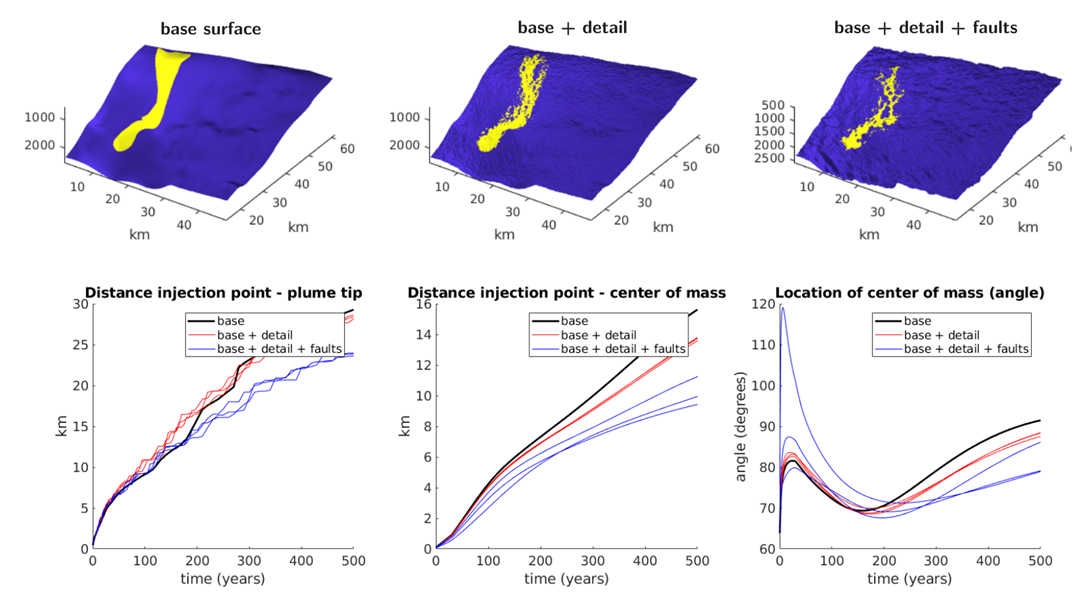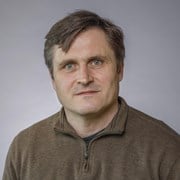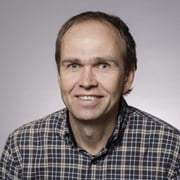The project is a collaboration between the Department of Geosciences at the University of Oslo, SINTEF Digital, and GEUS, Denmark. The Gassum Formation, a sloping open aquifer in Skagerak, south of Norway, is used as a case study, utilizing data from multiple 2D seismic surveys.
The complete scope of the project is described at the official web page at UiO, and addresses a range of CO2 trapping mechanisms.
SINTEF Digital focuses on assessing the potential for structural trapping and plume retardation by caprock topographical features. The first step involves reconstructing the formation top surface from available data. Since the available 2D seismic lines are insufficient to uniquely describe the top surface, stochastic ensembles of top surface topographies are generated to remain consistent with the input data. Thin-plate splines, Gaussian fields, and explicit feature modeling are employed for this purpose.

In a second step, vertical-equilibrium models are used to simulate CO2 injection and long-term migration on these realizations. The simulation results are then used to provide statistics on migration distances, speeds and small-scale structural trapping, and how these quantities varies depending on modeling assumptions.

Overall, this project outlines a workflow to assess the potential and suitability of open sloping aquifers for CO2 storage, considering limited data availability.


